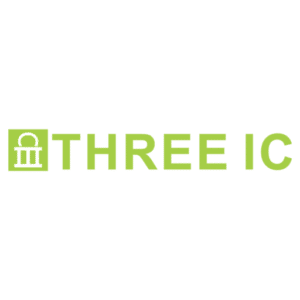

In today’s digital age, where cyber threats constantly loom large, steering your way through this intricate network can indeed be overwhelming. Nonetheless, knowledge remains your greatest ally, especially understanding the various types of ransomware. Equipping yourself with this crucial information, particularly in the current year of 2023, can significantly bolster your defenses.
This comprehensive guide provides a broad range of strategic measures specifically designed to safeguard you against the most prevalent ransomware attacks. These proven strategies aim not only to defend your digital environment but also to ensure the safety of your encrypted files.
Remember that keeping ahead in the cybersecurity field requires proactive action to prevent risks from materializing rather than simply responding to them as they occur. By grasping the underlying principles of ransomware and how to prevent ransomware attacks, you empower yourself to maintain robust cyber defenses that can thwart these malicious threats, thereby ensuring a safer digital environment.
A particular category of malicious software called “ransomware” is intended to infiltrate and compromise a computer system’s data. Once this malicious program is in control, it encrypts the data that is kept on the machine, preventing the user from accessing their own files. This intentional obstruction sets the stage for the attacker’s main goal: extortion.
Following this encryption process, the ransomware attackers initiate contact with the victim, demanding a specific amount as ransom. The incentive offered for the payment of this ransom is the provision of a decryption key. This unique key, they claim, will unlock or decrypt the inaccessible, encrypted data, restoring the user’s access to their files.
A crucial aspect to be aware of is that the prime targets of these common ransomware attacks are predominantly systems running on Windows. These attackers exploit specific vulnerabilities inherent in the operating system to carry out their illicit activities, emphasizing the importance of regular system updates and patches to reinforce system security.
This ransomware strain is a type of police trojan that locks the user interface of a victim’s computer or mobile device. Unlike crypto ransomware, locker ransomware does not encrypt files. Instead, it restricts user access until the ransom is paid.
Arguably amongst the most dreaded ransomware types, crypto ransomware encrypts files and exports data on a victim’s system. A notable ransomware example is CryptoLocker ransomware, which became infamous for its ruthless encryption techniques.
In double extortion ransomware, attackers not only encrypt data but also steal sensitive data before encryption. If victims refuse to pay the ransom, the attackers threaten to release the stolen data to the public.
Ransomware as a Service allows less skilled threat actors to launch attacks. The ransomware service provider offers sophisticated ransomware for rent or sale, allowing anyone to become a ransomware attacker.
Combined attacks are used in Distributed Denial of Service (DDoS) ransomware. Along with encrypting data, attackers overburden the victim’s network with traffic, which makes it sluggish or can even cause it to crash.
It helps to examine specific examples of ransomware, investigating how they function and the damage they cause, in order to properly comprehend different types of ransomware.
WannaCry ransomware exploits a vulnerability in the Windows’ Server Message Block (SMB) protocol. It rapidly spread across networks, encrypting files and demanding Bitcoin payments for their release.
The Maze ransomware group launched a new era of double extortion ransomware. Not only do they encrypt files, but they also threaten to publish sensitive data if the ransom isn’t paid.
Petya ransomware attacks the master boot record (MBR), effectively locking users out of their entire system. NotPetya is a Petya-like malware that can spread throughout a computer on its own. On the other hand, Petya needs the victim to download it and open it themselves.
Knowing the types of ransomware and some examples of ransomware attacks is the first step in prevention. But what practical measures can you take to protect your own system from an attack?
One of the easiest ways to prevent a ransomware attack is to keep your system and software updated. Attackers often exploit known vulnerabilities in outdated systems.
Ensure you have reliable antivirus software installed on your system. These antivirus programs regularly scan for potential malware infections, including ransomware, and neutralize them before they cause harm.
Phishing emails are one of the most common methods used by attackers to deliver ransomware. Be cautious of suspicious emails, especially those with attachments or links.
Ensure that your security teams are aware of the latest ransomware threats and understand the importance of access management and detecting malicious URLs.
Battling ransomware effectively requires more than just regular software updates and standard antivirus measures. To ensure well-rounded protection against ransomware attacks, more advanced strategies such as implementing Domain Message Authentication Reporting, leveraging Remote Desktop Protocol (RDP), and creating offline backups are highly recommended.
Domain Message Authentication Reporting and Conformance (DMARC) serves as a sophisticated email validation tool, built to safeguard your organization’s email domain from being misused for deceptive practices like email spoofing. When coupled with DomainKeys Identified Mail (DKIM) and Sender Policy Framework (SPF), DMARC helps verify users, restrict access to counterfeit emails, and shield your system from ransomware intrusions initiated via email.
Ransomware attackers frequently target individual endpoints such as computers, tablets, and mobile devices that connect to your network. Thus, augmenting endpoint security is a crucial strategy in repelling ransomware threats. Comprehensive solutions like Sophos CIXA merge antivirus capabilities and firewall protection. They also introduce advanced functionalities like intrusion detection systems, data loss prevention, and device control for superior security.
Consistently backing up crucial data can dramatically reduce the fallout of a ransomware infection. Nevertheless, numerous ransomware variants can encrypt files linked to cloud services or network drives. To ensure the safety of your backup files, it is prudent to maintain offline or air-gapped backups.
Security Operations Center (SOC) as a service is a versatile, cloud-based solution that consolidates the management of your organization’s security operations. By providing constant access to state-of-the-art security tools and expert teams, it proactively identifies and responds to security incidents, including ransomware attacks. This continuous vigilance, prompt response, up-to-date threat intelligence, and comprehensive reporting empower organizations to stay ahead of ransomware threats in the constantly evolving cyber threat landscape.
The Software-Defined Wide Area Network (SD-WAN) firewall utilizes software to manage network security, offering secure connectivity across diverse networks and robust threat prevention capabilities.
Implementing an SD-WAN firewall such as the one offered by Palo Alto Solutions presents your organization with a formidable, innovative, and adaptable strategy to counter ransomware threats. With its enhanced security, real-time threat detection, granular control, updated threat intelligence, and improved network performance, it assures your organization of a robust security stance.
Ransomware attacks are evolving, but with proper knowledge and vigilance, you can protect your systems. Stay informed, stay updated, and most importantly, don’t become a victim. Prevention is the best ransomware protection.
In conclusion, navigating the complex landscape of cyber threats, particularly ransomware attacks, calls for a strategic, informed, and comprehensive approach. Understanding the different types of ransomware and staying updated on the latest protection strategies is crucial.
By deploying advanced security measures like Domain Message Authentication Reporting, strengthening endpoint security, maintaining offline backups, leveraging SOC as a service, and using an SD-WAN firewall, you can significantly bolster your defenses against ransomware attacks.
The objective is not only to react swiftly to threats when they emerge but also to proactively develop a security posture that prevents such threats from materializing.
Knowledge and vigilance are powerful tools in this ongoing fight against cyber threats. Staying abreast of the latest developments and adapting your security measures accordingly is the best way to ensure a safe and secure digital environment for your organization.
Interested in protecting your business from ransomware? Contact THREEIC today, and let us show you proactive solutions to ensure a best-in-class security posture for your business.
Different ransomware types can impact various sectors in unique ways. For instance, CryptoLocker ransomware primarily targets businesses by encrypting valuable files, while locker ransomware, such as police trojans, mainly affect individual users by locking them out of their devices. Additionally, sectors with sensitive data like healthcare and finance often face ransomware threats designed to extract and exploit such information.
While all ransomware attacks pose serious threats, their level of harm can vary. Some ransomware types merely lock your screen, while others like crypto ransomware can encrypt your files, rendering them inaccessible. More advanced forms like double extortion ransomware not only encrypt data but also threaten to leak sensitive information, increasing potential damage and reputational harm.
Ransomware has indeed evolved over time, leading to increasingly sophisticated threats. For example, early forms of ransomware often involved simple screen lockouts, while recent variants employ complex encryption and data exfiltration techniques. In the future, we might see ransomware incorporate AI technologies to evade detection or use quantum computing to break encryption. By staying abreast of these trends, you can better anticipate and prepare for emerging threats.

THREE IC, a prominent provider of Cyber Security and IT solutions, produces the majority of the blog posts featured here. These articles are authored by a team of professionals employed at THREE IC, including content writers and marketing experts. They are dedicated to creating informative content on a wide range of subjects that are relevant to our readers.
Our team ensures that the published articles are accurate and beneficial for our clients and partners, helping them stay informed about the latest trends in Cyber Security and IT and understand how these advancements can benefit their organizations.

address
address
TEL
+65 XXXX XXXX
info@threeic.com
address
Singapore Address here
address